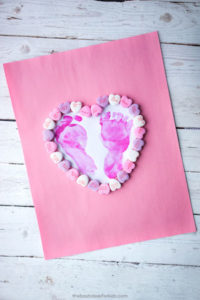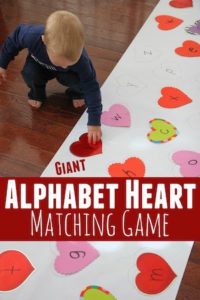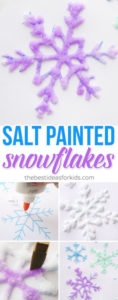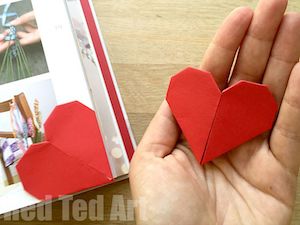How can we help you today?
Pediatric
Our Pediatric Services emphasize the well being of your child's health. We strive to provide the best quality and individualized care with integrity and honesty in a child-friendly environment.
View LibraryRheumatology
Renowned, Dr. Joan Calkins offers specialized care in pediatric rheumatology, and has helped thousands of children struggling with this difficult diagnosis.
Learn MoreNew Patients
We are accepting new patients! Click here to learn how to become a patient at Village Pediatrics & Rheumatology.
Join Us TodaySame Day Sick Appointments
Is your child sick? We encourage you to contact Village Pediatrics Immediately.
Learn MoreRefill A Prescription
Request a renewal of a current prescription by filling out an online information form. We will contact you within 48–72 hours with a reply.
Request A RenewalDedicated to Keeping
Your Family Healthy
For over 20 years, Dr. Joan Calkins and her staff have worked together delivering quality medical care for all children, from birth to age 21. Centrally located in the beautiful Village of Hamburg, NY, we offer same-day sick appointments, early morning and Saturday hours.
In addition, Dr. Joan Calkins, M.D. has over 30 years of experience as a renowned Pediatric Rheumatologist.

Services For Your Young Ones
Compassionate and high quality healthcare services for your children.
Select an icon below to reveal articles and information about the topic.
Pediatrics
Healthy Knowledge
Rheumatology
Pediatrics
When to go to Urgent Care and when to call your Pediatrician
Parenting is complicated. You’ve got to make a lot of decisions, and when it comes to your sick little one, you want to make the right decision quickly. So, how do you decide when to take your child to an Urgent Care, Emergency Room, or Primary Care Physician? This is a simple question with a complex answer, but we wanted to lay it all out for you, so when the time comes, you’ll be prepared to make the right choice quickly. Continue Reading…
Pediatrics
Well Child Visits & Check Ups are Important
Well Child Visits Foster Growth & Child Development
The American Academy of Pediatrics has an established schedule of checkups at pre-set intervals during a child’s development. These appointments are the equivalent of annual physical for an adult. The schedule also tends to follow the immunization requirements so that your child is prepared for each step of his/her development. Continue Reading…
Pediatrics
What Is a Pre-Participation Sports Physical?
A pre-participation sports physical examination ensures that student athletes are healthy and well enough to engage in their chosen athletic endeavor. These checkups are often mandatory under state law and must be conducted for every participation year. Continue Reading…
Pediatrics
Immunizations
Vaccines Save Lives. Call Village Pediatrics to Protect Your Child.
Childhood vaccinations are extremely important in preventing a number of diseases—many of which can be fatal or cause lifelong disability. Thanks to immunizations, diseases that once claimed thousands of young lives are now rare and preventable.
Pediatrics
Pediatric Rheumatology at Village Pediatrics
Village Pediatrics & Rheumatology has the unique privilege to offer specialized care in pediatric rheumatology. Renowned Dr. Joan Calkins has over 30 years experience in this unique pediatric practice, and has helped thousands of children struggling with this difficult diagnosis.
Healthy Knowledge
Have you gotten your COVID-19 vaccine yet?
All New Yorkers age 16 and older are now eligible for the vaccine. The Village Pediatrics and Rheumatology staff fully endorse getting the COVID-19 vaccination and strongly recommend that those who are eligible receive it.
To assist you in finding an appointment, here are some handy links:
New York State’s COVID-19 vaccine page: https://covid19vaccine.health.ny.gov/
Western New York Vaccine Hound: https://www.vaccinehound.org
Vaccine Finder: https://vaccinefinder.org/
While the vaccination process is underway, New Yorkers should continue to wear a mask, social distance, avoid large gatherings and follow all other health guidelines.
In addition, once a patient becomes fully vaccinated they still need to follow the state and county regulations. The information for Erie County can be found here and the information for Cattaraugus County can be found here.
Village Pediatrics is in the process of becoming a NYS certified COVID-19 vaccination site. Once approved and we receive our first allotment, we’ll begin accepting vaccine appointments for patients 16 years of age and older and their parents and families.
In the meantime, be sure to sign up for your vaccine now, using one of the links above!
Healthy Knowledge
Yay! It’s Spring! (And we have a few health & safety reminders)
Yay! It’s spring! It’s (almost) time to trade the winter boots for flip-flops. As the days get warmer and longer, we wanted to remind you of a few outdoor safety tips. “An ounce of prevention is worth a pound of cure.”
Sun safety
The warm sun can feel welcome after being cooped up during cooler months. It provides Vitamin D and is important for your child’s health, happy mind and mood. Even though it’s not as hot as July, the sun can still have an unexpected effect on your child’s skin. Make sure your children wear sunscreen—even when it’s cloudy. Wearing a hat is a good idea for sunburn protection as well.
Insect bites
The kids are back outside, and so are the bugs. They are, unfortunately, another sign of spring. Make sure your child stays covered up at dusk, and don’t forget the bug spray. The American Academy of Pediatrics recommends that repellents contain no more than 30% DEET, and children under 2 months of age should not be sprayed with insect repellent. For more information, check out these additional guidelines. If your child is bitten by an insect and experiences swelling, faintness, vomiting, or difficulty breathing, contact our office (or immediate care) right away.
Spring allergies
Allergies are one of the most common spring health issues. Up to 40 percent of children in the United States suffer from seasonal allergies, and they can develop them at any time. Common symptoms include repetitive sneezing, heavy breathing, runny nose, and itchy eyes, ears and throat. If you suspect your child’s “cold” is something more, give us a call.
Don’t forget those helmets
You already know how important helmets are to your child’s safety when biking or rollerblading. Helmets help protect them against serious injury and death. While you’re dusting off the rollerblades, scooter and bikes, do a quick helmet check too. Make sure they fit correctly and replace any that are too small or cracked or broken.
Keep an eye out while driving
Because it’s nice outside, your children – and all the neighborhood children – will probably be outside and running around. Take extra precautions while driving through your neighborhood and other neighborhoods, and keep an eye out for balls rolling toward the road, or pets that aren’t properly leashed that could dash in front of your car. Often these objects will have a young child following closely behind.
Playground refresher
Now that it’s warmer outside, your little one will want to play on your backyard swingset or head to the local school or playground. Now’s a good time to remind them of playground safety rules; things like going down the slide feet first, holding onto railings, sitting (not standing) on swings, and waiting their turn. Take a quick scan of the equipment to make sure there aren’t any hot surfaces or wood splinters (ouch!) waiting for the unsuspecting climber.
From all of us at Village Pediatrics & Rheumatology, here’s wishing your family a safe & healthy spring!
Healthy Knowledge
Keeping Your Sanity (When Your Kids Are Driving You Nuts!)
There’s a family down the street we refer to as Sports Family. There’s Sports Dad, Sports Mom and three Little Sports. They can’t park in the driveway because there’s no room given the assortment of bikes and nets and equipment. The lawn is usually overgrown because there’s no time to cut it between baseball games.
One day when we were all getting used to being cooped up at home, there was a loud uproar emanating from Sports House. This wasn’t someone kicking a soccer goal or getting a great hit. This was all-out spine-tingling screeching.
Quite simply: Sports Mom lost her cool.
We laughed about it later. “Yeah,” she acknowledged matter-of-factly, “That wasn’t one of my better moments.”
Sometimes, your kids just drive you nuts. It’s a fact, just like sometimes they want to cuddle and sometimes they catch a cold. It’s part of having kids.
But that doesn’t mean you have to wait for the issue du jour to blow over. It’s not healthy for anyone if you feel like your children are making you crazy. So if counting to 10 (or 20, or 100) isn’t working, try out some of these tips.
Use Your Head Not Your Emotions
Take time to stop and think: Are you reacting because you’re angry, or have you thought the situation through and decided how to respond first? Taking the time to make decisions from your head instead of from your feelings will go a long way in resolving the chaos in a calm matter.
Don’t Feel Guilty
It’s OK to feel annoyed. But don’t feel guilty if you do. Just acknowledge it, accept it, and tell yourself, “Hey, things are a bit out of control today; no wonder I’m exasperated.”
Change Your Focus
If the kids are picking on each other and playing The Blame Game, it’s hard not to dwell on how aggravating they’re being. Try focusing on your own behavior, rather than your child’s. Part of this is learning ways to better manage your emotions. When you get focused on your life and your goals, you’ll have more connection and influence over your child.
Start a New Routine
Is your family in a rut? Do you tend to follow the same daily schedule? Consistency is definitely important, but sometimes you may need to shake things up. Find a nature trail where you can feed wild birds or tackle a recipe in which everyone gets to participate.
Stop an Old Routine
On the other hand, if you suspect that constant chaos is contributing to the family stress, it might be time to introduce a routine. You don’t have to go overboard, but designating times for meals, snacks, playing outside, screen time, naptime, etc. can go a long way in establishing a sense of order.
Make Time for Exercise
Are you thinking, “I WISH!”? Sometimes it’s hard to fit physical activity into your day. Often, it’s one of the first things to drop off the To Do list. But physical fitness is important, and it’s as beneficial to your mind as it is to your body. Exercise helps people sleep better, reduces stress levels, and boosts the endorphins that help you to feel happier.
Make Time for You
How many times have you dumped on a friend, only to feel a wave of relief at hearing them say, “No WAY! That happens to me too!” We all need family, friends or other counselors to hear us out and affirm, “It’s normal that your kids get under your skin from time to time. I understand how you can feel that way.”
Just like physical exercise, don’t let self-care drop off your list. The best way to help your kids deal with their upsets is to exercise a little self-compassion toward yourself first.
Healthy Knowledge
Cute Valentine Ideas for Kids
Will you be our Valentine?
We want to be yours! Here’s a collection of cute crafts and activities to help your kids send hugs to friends, grandparents and maybe even you!

Thumbprint Valentine
Seriously easy! Thumbody loves you!

Footprint Heart Craft
If there are cute baby feet in your house, here’s a Valentine craft sure to bring
an “Awwww” from Baby’s fans.
You’re just a step away from the directions>

Learning Colors Hunt with Hearts
Here’s a great way to reinforce colors with a little someone you “heart”:

Giant Alphabet Heart Matching Game
Have your little ones mastered the color game? How ‘bout moving on to the alphabet game?
To make it more challenging for preschoolers, mix up lower and upper-case letters.

Salt painting snowflakes (or hearts!)
Salt painting is a fun and easy activity to do with your kids.
The snowflakes are so pretty; filigree hearts would look great too!

Kirigami Heart Corner Bookmarks
Here’s a simple craft you’ll want to “bookmark” for sure!
Healthy Knowledge
Managing Screen Time and Remote Learning
Remember the days when you were worried about your children spending more than two hours a day on screen time? So here it is 2021 and hybrid and virtual learning are still going strong. Parents realized a while ago (perhaps reluctantly) that the “old” screen time guidelines set by the AAP (American Academy of Pediatrics) aren’t particularly realistic right now.
Still, the combination of parents working from home, students learning from home, and many of the usual outside activities being unavailable is resulting in children spending a lot of time on laptops, tablets and phones.
To help preserve everyone’s sanity, here are some tips for managing the increased screen time:
Lead the way
Set a good example by following the behaviors you wish to see in your children. Set clear boundaries for media use and follow them as a family. Be careful about unintentionally setting a bad example. (After all, you’ve most likely been cooped up too!)
Create a screen time limitation plan
Set distinct rules about screen time and how, when, and where your kids can use the internet. Discuss these boundaries and rules clearly with them. You’ll most likely be viewed as the bad guy, so be sure to clearly explain why limitations around screen time/online activities are necessary.
Stay on top of online learning resources
It’s important to know what platforms, software, and apps your children are using for remote learning. Do your own homework on the technology your kids use. Close to 100,000 apps are labeled as educational, but are the ones your kids use truly beneficial to learning?
Engage with your children when they’re using screens
Screen time shouldn’t always be alone time. As much as you can, try to participate in your kids’ distance learning activities. Don’t just monitor their online activities; be a part of what they’re doing. It will encourage bonding and learning.
Stay in touch with teachers
Contact teachers about educational online and offline activities that are right for your child.
Preschool teachers may not have an online curriculum to share, but PBS Kids is a great source of educational entertainment. For school age children, Common Sense Media gives parents a review of exactly what their children will encounter in pop culture TV/movies so they can determine if it’s appropriate.
Create a balance between online and offline activities
Screen time can displace many important activities such as face-to-face interaction, family time, outdoor play, exercise, unplugged downtime, and sleep. So set limits and encourage physical leisure time.
Take advantage of the benefits of social media
Social distancing can be isolating. If your kids are missing their school friends or other family, try video chats or social media to stay in touch.
Encourage your kids to virtually check in
on grandparents, friends, neighbors and others special to them. If your schools are closed, find out if there are ways to help students who need meals or internet access for at-home learning.
Don’t forget about fresh air and exercise
With so many hours of screen time, it’s important to remember children still need about 60 minutes of exercise per day. Indoor exercise and yoga videos for kids are a great way to burn up some energy. Alternatively, most outdoor play can be done if social distancing is observed and children in the same household play together. Extra points for making this a regular part of your day!
Take your child (virtually) to work
Working from home? Use this time as a chance to show your kids a part of your work world. Think of ways they can be your “helper.” It’s like “Take your child to work day” right from your home.
Create tech-free zones
Encourage more focused family time, healthier eating habits, and better sleep by keeping mealtimes, other family and social gatherings, as well as children’s bedrooms screen-free.
We hope you find these tips helpful. And we’re even more hopeful that it won’t be long before we won’t need them anymore!
Healthy Knowledge
Winter Car Seat Safety
Here in Western New York, we don’t let a little cold weather stand in our way. Skiing, sledding, enjoying a nature walk – that’s what we do. Bundle the kids up, pack a thermos of hot chocolate, and you’re on your way. But before you head out, take a quick check of your child’s car seat.
As a general rule, bulky clothing, including winter coats and snowsuits, should not be worn underneath the harness of a car seat. Thick winter coats can keep your baby warm but they can compromise your child’s car seat safety.
In order for car seats and boosters to function properly, the straps need to remain tight against your child’s chest. Winter coats and snowsuits change the way a child fits into the car seat. In a car crash, the fluffy padding immediately flattens out from the force, leaving extra space under the harness. A child can then slip through the straps and be thrown from the seat.
Here’s a simple way to check whether your child’s coat is too big to wear underneath a harness:
Step 1: Put the coat on your child, sit him or her in the car seat and fasten the harness. Tighten the harness until you can no longer pinch any of the webbing with your thumb and forefinger.
Step 2: Without loosening the harness at all, unhook it and remove your child from the car seat. Take the coat off, put your child back in the car seat, and buckle the harness straps, which should be adjusted just as they were when the child was wearing the coat.
If you can pinch the webbing between your thumb and forefinger now, then the coat is too bulky to be worn under the harness.
How to Keep Your Child Warm and Safe in the Car Seat
These tips from the American Academy of Pediatrics (AAP) will help parents strike that perfect balance between keeping little ones warm as well as safely buckled in their car seats.
* Get an early start. If you’re planning to head out the door with your baby in tow on winter mornings, you need an early start. You have a lot to assemble, and your baby may not be the most cooperative. Plus, driving in wintry conditions will require you to slow down and be extra cautious.
* Store the carrier portion of infant seats inside the house so it isn’t cold when you put your child into it. Keeping the seat at room temperature will reduce the loss of the child’s body heat in the car.
* Warm up your vehicle before you go.
* Dress your baby or toddler in thin layers of clothing . Each layer holds warm air. The layer next to the skin should be close-fitting, such as tights, leggings, long underwear, or a long-sleeved bodysuit. Then add pants and a warmer top, like a sweater or thermal-knit shirt. Your child can wear a thin fleece jacket over the top. In very cold weather, long underwear is also a warm and safe layering option. As a general rule of thumb, infants should wear one more layer than adults.
* Add a hat, mittens, and warm socks or booties to keep head, hands, and feet toasty. These help keep kids warm without interfering with car seat straps.
* Buckle the seat, adjusting the straps each time you do. You should only be able to get one finger under the harness at your child’s collarbone. If you can pinch the strap, it is too loose.
* Use a coat or blanket over the straps,. You can add a blanket over the top of the harness straps or put your child’s winter coat on backwards (over the buckled harness straps) after he or she is buckled up. As the car heats up, you can remove a blanket so your child doesn’t overheat.
* Use a car seat cover ONLY if it does not have a layer under the baby. Nothing should ever go underneath your child’s body or between her body and the harness straps. Be sure to leave baby’s face uncovered to avoid trapped air and re-breathing.
* Pack an emergency bag for your car. Keep extra blankets, dry clothing, hats and gloves, and non-perishable snacks in your car in case of an on-road emergency or your child gets wet on a winter outing.
Have a great time enjoying the great WNY outdoors this winter! Follow the tips above and your family will be happy … and safe!
Rheumatology
Joan G. Calkins, MD
Dr. Joan G. Calkins, MD educated at Johns Hopkins School of Medicine,and is a member of the American Board of Pediatrics, sub-Board of Pediatric Rheumatology and the American College of Rheumatology. She also is a clinical assistant professor at the University of Buffalo School of Medicine and is often giving lectures and seminars on her experience and knowledge. Continue Reading…
Rheumatology
Lindsey Rogers, RPA-C
Lindsey Rogers, RPA-C, educated at Daemen College, and has a B.S. in Health Science and an M.S. in Physician Assistant Studies. She has worked with Dr. Calkins for over 11 years. Her experience has expanded so that Lindsey sees both Pediatric and Rheumatology patients. Continue Reading…
Rheumatology
Pediatric Rheumatology at Village Pediatrics
Village Pediatrics & Rheumatology has the unique privilege to offer specialized care in pediatric rheumatology. Renowned Dr. Joan Calkins has over 30 years experience in this unique pediatric practice, and has helped thousands of children struggling with this difficult diagnosis.



